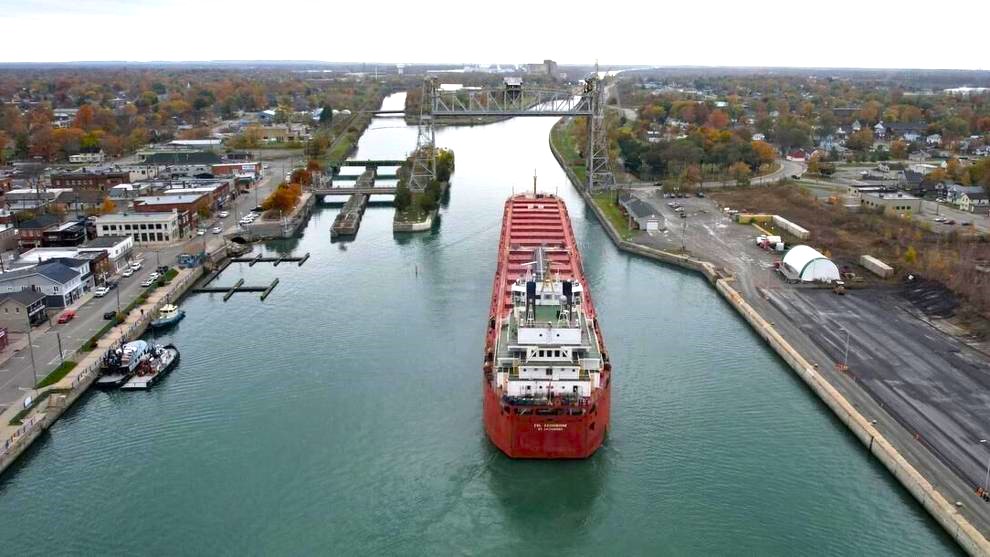“We see transport trucks on our roads, we get stuck at rail crossings by trains, but the ships are out on the Great Lakes and in the rivers and don’t cross our paths daily. There’s no conscious awareness of how big the industry is,” said Salmons, Windsor Port Authority’s president and chief executive officer.
The council is an industry association representing the major stakeholders in Ontario’s marine sectors, including port operators, shipyards, ship owners and St. Lawrence Seaway Management Corp.
Last week it released a study by Martin Associates called Economic Impacts of Maritime Shipping in the Province of Ontario.
The independent study by the American firm with decades of experience in the marine industry identified the economic impacts created by all cargo and vessel activity in Ontario in 2022.
Salmons said last year the industry supported 67,154 jobs, provided $3.95 billion in wages, generated $1.95 billion in taxes and created $9.6 billion in economic activity in Ontario.
Earlier this year, Martin Associates released its 2022 report, Economic Impacts of Maritime Shipping in the Great Lakes-St. Lawrence Region, which showed the overall impact of the industry in Canada and the U.S. through the Great Lakes-St. Lawrence Waterway was $66.1 billion generated in economic activity.
The waterway touches two Canadian provinces and eight American states and has 110 ports and commercial docks that access 40 provincial and state highways and 30 rail lines.
The Ontario study came from the overall report and brings awareness to just how big the marine industry is in the province, said Salmons.
“We need to make this a priority,” Salmons said. “Without the marine industry, farmers can’t get their grain out for export, industry can get the cement, stone and iron ore it needs, road salt doesn’t come in.”
He said the provincial government recognized the study and released its marine transportation strategy in October.
The marine council, Chamber of Marine Commerce, key stakeholder groups and municipalities, including Port Colborne, have been calling for a strategy and a marine secretariat to develop a policy and funding framework.
Quebec and British Columbia each have maritime strategies to help their economies,
“The statistics in the (Martin Associates) study showed how critical marine transportation is in Ontario. It is a huge economic contributor.”
Salmons said with the study out and the province moving forward with its marine transportation strategy, it’s time for various groups, associations and organizations to do their part in promoting the industry, raising general awareness and explaining how it contributes to Ontario.
“We’ll be releasing our strategic plan,” said Salmons, adding it will show how the industry can move forward and advance Ontario’s economic priorities.”
Salmons said the recent strike by St. Lawrence Seaway Management Corp. employees was another wake-up call, showing the importance of keeping vessels, ocean-going and domestic fleets, moving.
“When COVID-19 hit, products stopped moving, and with the recent strike in the port of Vancouver, products were disappearing off the shelves. The seven-day seaway strike had an immediate impact on industry and the supply chain.
“Farmers were at the peak of the harvest season, and while they could get their crops to terminals, there was nowhere to ship. Steel producers who rely on a steady supply of iron ore pellets and coal suddenly began to worry whether they would have supplies to get them to the next week.”
Salmons said the strike vibrated through the economy.
Figures from the Chamber of Marine Commerce showed the strike’s daily cost to the combined Canadian-U.S. economies was $100 million.

